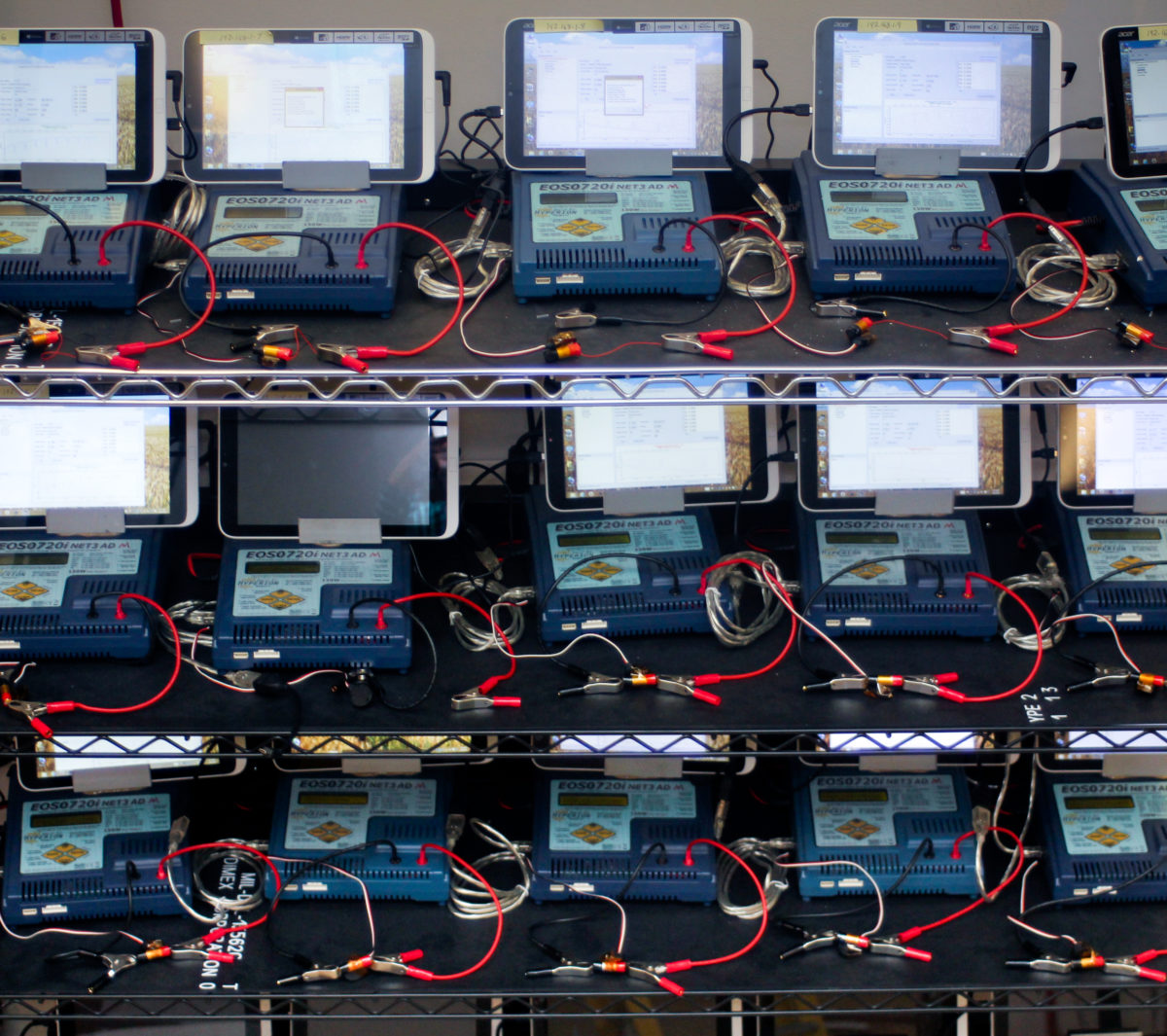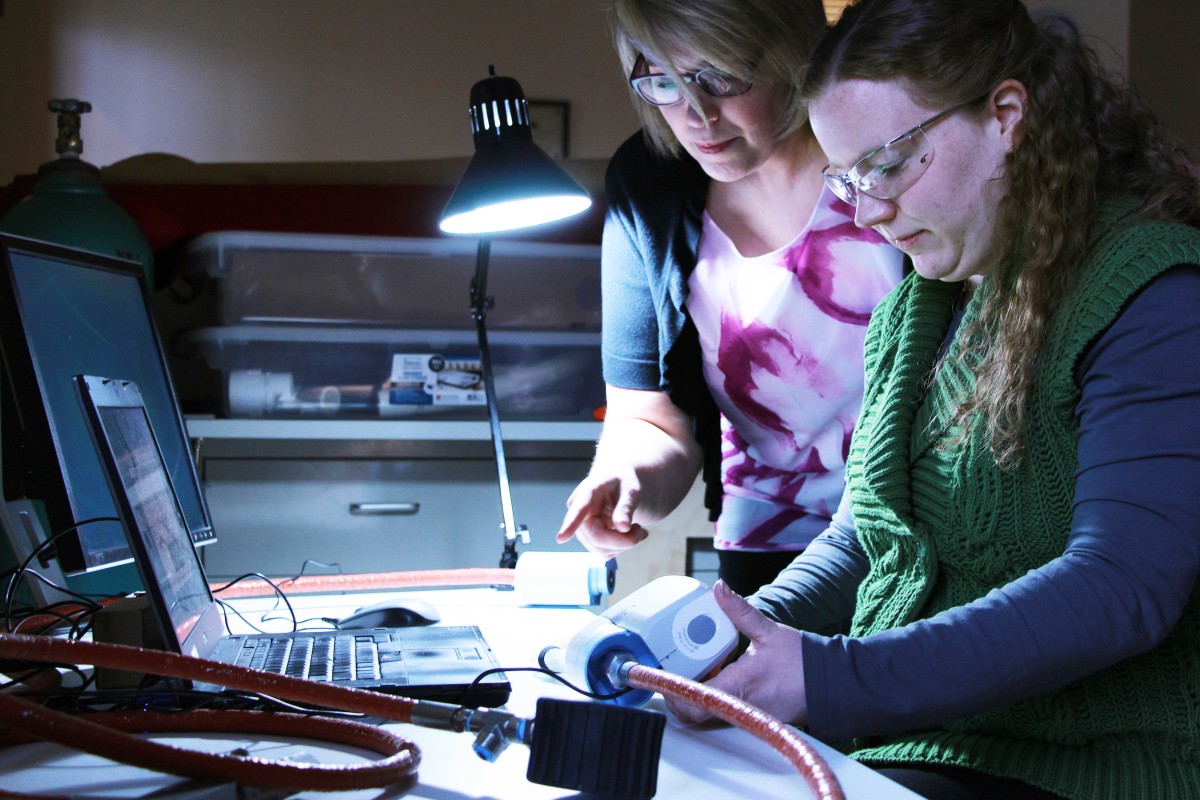
Trial by Ordeal: Destructive Physical Analysis for Products
In the modern world of product development and manufacturing, distinguishing good materials, components and devices from bad ones is critical. This type of product testing may require torture.
Separating the good from the bad sometimes requires going to extremes. In the 16th and 17th centuries, witchcraft was thought to be a real threat to society. Witches were indistinguishable in appearance from the rest of the population, so tests were devised to ferret them out. The best known of these was the infamous ordeal by water, or “swimming test,” in which the suspect would be stripped to their undergarments, bound, and tossed into a body of water. If the water rejected them (i.e. if they floated), they were labelled as a witch and subjected to (usually fatal) punishment. If the water accepted them (if they sank), their innocence was demonstrated. Although it’s been popular to portray this as a no-win situation for the suspect, a rope was attached for retrieving them so that they usually (not always) survived the test.
Not-So-Fun Fact: Sometimes, suspected witches were subjected to dunking stool torture, the period equivalent of waterboarding to elicit a confession.

A depiction of trial by water. While bb7 does not condone human torture, we frequently subject materials, components and devices to water testing.
It’s doubtful the swimming test succeeded in detecting many “real” witches, but the general idea of trial by ordeal has its uses. In the modern world of product development and manufacturing, distinguishing good materials, components and devices from bad ones is critical. This sometimes means testing them to the point of failure (like the witch suspects who didn’t survive). We submerge them in water or less benign liquids. We rack them on Instrons until they stretch and break. We press them under increasing loads until they buckle and crush (reminiscent of pressing an individual under heavy stones that was used to make “witches” confess). We subject them to high temperature and flame (like ordeals by hot water, boiling oil and fire). We subject them to high voltage or current (a modern alternative to waterboarding for confessions). Under these “tortures,” our test subjects confess their hidden flaws. In these kinder and gentler times, this is called destructive testing or destructive physical analysis (DPA).
Destructive physical analysis (DPA) has some definite advantages over nondestructive testing (NDT). DPA tests generally yield more information, and are easier to interpret and carry out compared to NDT tests.
The chief drawback to destructive testing is that the items under test will be destroyed – like in the old and admittedly dated joke about the new camera store employee who assured his boss that the shipment of single-use flash bulbs was good because he tested them all. DPA can be costly and is typically limited to inexpensive high volume items or sub-assemblies, except where the consequences of failure are severe, e.g. automotive crash testing. When testing very expensive items, the strategy is to maximize the data yielded by each test. For example, automotive crash tests must generate gigabytes of data in a few tenths of a second, requiring expensive high speed cameras and data acquisition equipment.

Though expensive, DPA is required for automotive testing to ensure and improve safety.
The greatest advantage of DPA is that it can reveal failure modes, the ways a component or device can functionally fail.
Stress tests (sometimes called torture tests…really!) are tests performed beyond normal operating conditions. The information they yield allows reliability engineers to determine safe usage limits or to estimate the operating life of a device or component. Such information is particularly important in performing risk analysis, a critical step in risk management, in order to meet the requirements established by ISO standards and regulatory agencies. DPA is a useful tool in product development, but prototype parts and devices are expensive to fabricate so careful planning is required to get the most out of this testing.
Guidelines for DPA Strategy:
Plan from the Beginning
In addition to yielding failure modes and operating life, DPA can provide information on whether product specifications are being met. Setting product specifications is one of the first steps in product development. For some products, like medical devices, there are already extensive requirements from ISO, FDA and other regulatory agencies. Often these have detailed test methods as part of the requirements. The project plan needs to include production of enough parts, sub-assemblies and assembled devices to accommodate for DPA testing in addition to whatever is needed for other evaluations. As the design evolves during the course of the project, testing requirements should be reviewed along with risk analysis and other design aspects.
Test at the Lowest Reasonable Assembly Level
While some tests require a completely assembled device, others may only need (and may even be better performed) with a sub-assembly or component. Testing is usually easiest and cheaper at the individual component or material level. However, those tests need to reflect the operational and environmental requirements of the product. Material selection, for example, needs to take into account the full range of thermal, moisture, and chemical environments the component will be subjected to. This includes the other materials it will be in contact with in the assembly, as well as those materials constituent products. For example, nitrile O-rings and gaskets, popular for sealing, have phthalate-based plasticizers which can migrate and produce environmental stress cracking in many common plastics.
Computer modeling, such as finite element analysis (FEA), can be used to estimate mechanical and thermal stresses on components under use cases, guiding material and component selection as well as establishing the appropriate conditions for DPA. Failure analysis of tested materials can then either validate the results of the simulation or reveal unexpected failure modes.
Testing under expected typical and extreme conditions is particularly important for critical components.
A case in point is the rechargeable lithium ion batteries used in many portable devices. The manufacturers’ specifications are based on a test protocol which seldom reflects actual device requirements. When testing batteries with identical specs under conditions more closely reflecting actual use, bb7 has found significant differences in performance between manufacturers.

When testing batteries with identical specs under conditions more closely reflecting actual use, bb7 has found significant differences in performance between manufacturers.
Get the Most from Every Test
The great advantage of testing to failure is the ability to determine both exact mode of failure and the course of performance degradation under controlled conditions. Where feasible, monitoring should occur to track changes prior to failure. After failure occurs, failure analysis should be performed to determine the root cause of failure. This sometimes requires a number of specialized instruments (microscopes, spectroscopes, etchers, etc.) and may best be performed by outside labs that specialize in failure analysis. The information generated feeds into failure modes and effects analysis (FMEA), to make products safer and more reliable. During product design, it provides an opportunity to change the design or components if projected performance is unacceptable, or lays a foundation for future improvements if it is. It also forms a baseline of expected failures to compare with field failures after the product is launched.

After failure occurs, failure analysis should be performed to determine the root cause of failure. This sometimes requires a number of specialized instruments.
As with any type of testing, previous experience is of great value. This is especially true when there are no appropriate standardized tests.
Experience and expertise can direct testing to points of greatest vulnerability. Test fixtures need to hold devices or components so stresses can be appropriately applied. Electronic circuits must be evaluated to find their weakest links. Accelerated tests need to appropriately exercise the device.
Trial by ordeal was a bad method for identifying witches. But in the realm of product development, DPA can pay large dividends in improved safety and customer satisfaction.